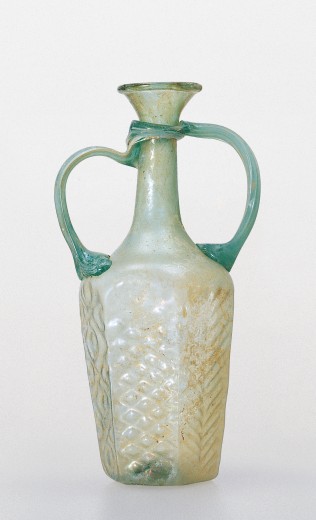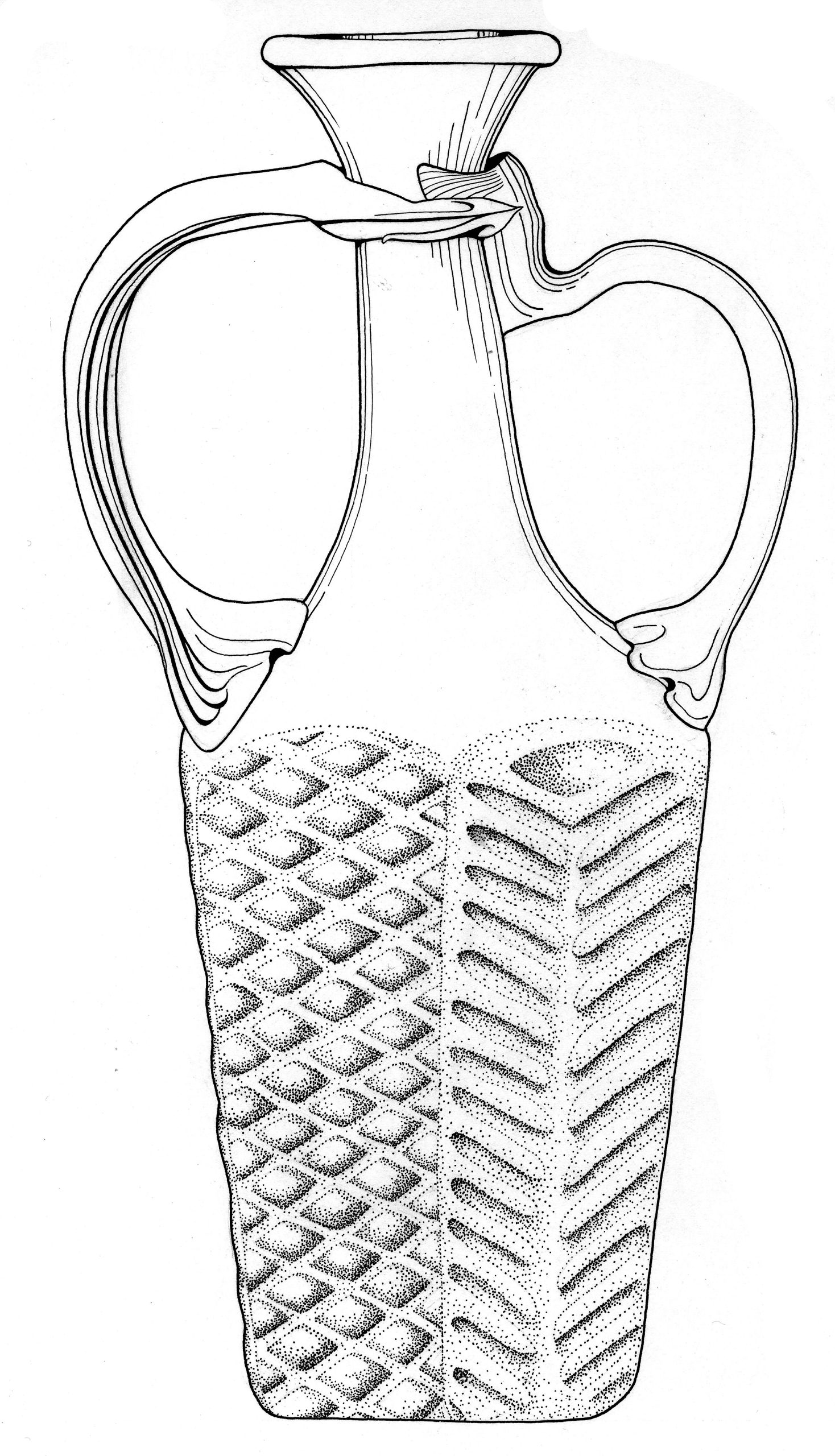 Print Page
Print Page
 Print Page
Print Page
Location: Syria or Palestine
Materials: transparent, bluish-green glass, yellowish-green at the rim from reheating; mould-blown and tooled, with trailed-on handles
Dimensions: 22 x 8.7cm
Accession Number: GLS 584
Other Notes:
This flask is associated with a group of hexagonal or octagonal mould-blown glass vessels used by pilgrims for bringing earth, oil or water back from the Holy Land. Other related polygonal vessels include ewers, jars and baskets.
The flask has a hexagonal body that tapers slightly from the shoulders to the base, which is kicked and bears a pontil mark. Its long cylindrical neck ends in a funnel-shaped mouth, the rim of which is folded outwards. The two applied handles are solid trails of glass, pulled up from the shoulder and wrapped round the neck; the handles of such hexagonal flasks are usually hollow.
The panels on the sides of the flask bear three different motifs, each repeated twice: a lozenge diaper with a central boss, a palm-frond or chevron motif, and a lattice. The base is decorated with a 12-lobed rosette.
Bibliography:
S.M. Goldstein et al, Glass. From Sasanian Antecedents to European Imitations, The Nasser D Khalili Collection of Islamic Art, volume XV, London 2005, cat.1, pp.30–31.

